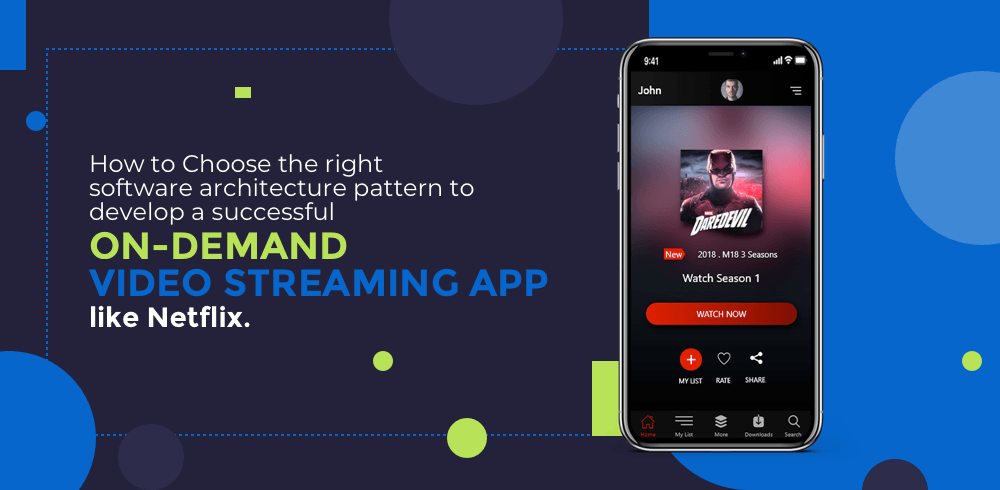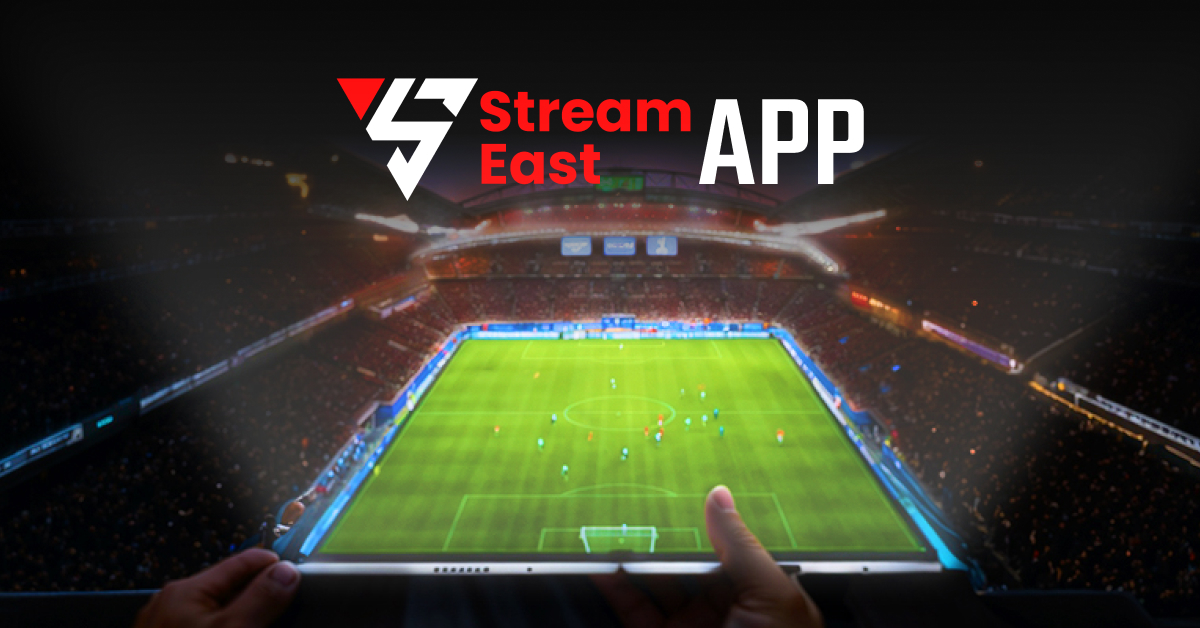The entertainment and media industries have been at the frontline of technical progress. Online film streaming services allow you to watch movies on any screen at any time. Read this blog to know more about Choose The Right Software Architecture Pattern To Develop Netflix- A Successful On-Demand Video Streaming App.
In this industry, video streaming apps are catching on, changing how social media marketing campaigns are run. Companies stream live video feeds for product demonstrations and presentations.
Non-profit organizations use online broadcasting to stream vital events to a wider audience. News and online coverage are broadcast. Sporting leagues use live streaming to allow their fans to stream matches, anywhere they are.
Government agencies use live broadcasting to comply with the legislation relating to open meetings. Religious organizations use streaming media to help their congregations expand.
Also, by 2025 the global demand for video streaming applications is projected to be valued at more than $120 billion. So, if you want to be part of the crowd, this is the right moment.
Digital TV streaming is gaining popularity every day where the major movie entertainment empires like Netflix, Amazon Prime, and Hulu pick up millions of dollars per minute, then why don’t some ambitious companies and individuals like you take up the entertainment market app like Prime Video?
From the viable stats and net worth, we recognize the growth of online video streaming websites is enormous, yet there is a lot of room for newbies as well.
Now let’s get into the details of developing video conferencing apps like Zoom and the real considerations that have made these movie streaming websites a great success in the economy.
What is A Software Architecture Pattern?
The architecture aims to identify a design to satisfy both technological and organizational criteria, with the shared objective of efficiency and safety optimization.
A platform’s software architecture defines its key components, their interactions, and also how they communicate. Generally, it acts as a scratchpad.

This provides various functions to manage the complexities of the framework and to create communication and cooperation between parts.
Architecture design requires the convergence of the needs of the company, as well as the construction team’s needs. Each action can have a huge effect on efficiency, sustainability, and the results of the platform.
In the lack of a simple algorithm of architecture, the architecture will return to conventional patterns. You end up only with code missing specific roles, obligations, and interactions with each other.
For example, software that collects customer data does not need complex architecture, which might turn out to be quite a nightmare if used. It would be like designing a warplane to hit the gas station that is just a few minutes away from home.
How to Create Video Streaming App like Netflix, Disney+ or Amazon Prime
Software Architecture Versus Design Pattern
Software design and architecture are sometimes misunderstood, so we’re going to break that. Software architecture is often used to describe a system’s structure and high-level elements, and how they all function integrated.
Choosing an architecture can decide how quality, fault tolerance, usability, and consistency are dealt with in video streaming app development.
Let us assume you are constructing a building for basic interpretation. Once the actual work commences, you would need a concrete strategy. You can’t start living in a flat that doesn’t have basic services like a bed, a kitchen, and other amenities.

You would need a simple interior for such a purpose, such that the concrete pillar architecture is a place worth residing in.
Through this example, the architectural patterns reflect how the exterior will look, while the interior design of the house reflects the design patterns.
Do you need a technical example like a serverless architecture that splits the framework into two parts: BaaS, i.e., Backend as a Service, and FaaS, i.e., Functions as a Service?
Do you need something like a microservice architecture, where even the different functions/tasks are separated into multiple modules/codebases? Software design is responsible for the development of the code level such as what the framework does, the nature of the modules, the functions of the classes, etc.
These can make an app developer substantially more effective when used carefully, by enabling them to resist making new ones, by using approaches that have been previously perfected by many others.
They do provide a valuable shared language when communicating with others or handling code in broader teams to truly understand recurring challenges and issues.
Architecture is seen in a software system when you’re dealing with business logic, system reasoning, interface, etc., while design patterns are being used for integrating business logic or database logic.
Different Types Of Software Architecture Patterns
It’s best to select an appropriate architectural pattern before beginning a major software, especially when creating a video streaming app that provides the required functionalities and quality characteristics.
Let’s talk about a few common architectural trends that have enabled many tech companies to ramp up their businesses. Note that with the best architecture, you can use multiple patterns in even a single framework to maximize each section of code, starting from the most basic platform architecture pattern to complex patterns.
- Client-Server Pattern
- Peer-To-Peer Architecture
- MVC Architecture
- Layered Pattern
- Event-Driven Architectures
- Microkernel Architecture
- Microservices Architectural Pattern
1. Client-Server Pattern
The architecture operates on a model of request-response. The client sends a request for details to the server and the server reacts to that request.
Any website that you visit is based on the client-server architecture, whether it’s a WordPress blog or a server software like Facebook, Twitter, or your banking app.
2. Peer-To-Peer Architecture
P2P is the cornerstone of blockchain technology. A P2P system is a combination where devices, also identified as nodes, can communicate with each other without a server computer being needed.
The lack of a central server excludes the possibility of one single failure mode.
Both network computers have fair rights. Around the same moment, a node serves as both a seeder and a teacher.
So, the link and the connectivity are still up, even though some of the computers/nodes go offline.
What Is the Role of Movie Streaming Apps in Redefining Entertainment?
3. MVC Architecture
The MVC pattern is an architectural pattern of programming in which the scheduling algorithm is split into three key elements. These components are called:
- Models – reflect how information is stored in the models
- Database – components that are accessible to the audience, such as an output or a GUI
- Controller components serve as an interface among models and views.
The MVC model is not only used for desktop software but also for web and mobile platforms.
4. Layered Pattern
People have likely noticed multi-layered, tiered architectures, or n-tier architecture before. A layered architecture is often divided into four different layers: presentation, enterprise, retention, and database.
However, the pattern is not restricted to the layer upon layer defined. That defines this trend as one in which each layer performs a separate function within the framework and is marked as closed, meaning a request will go through the layer that is right underneath it to the next tier.
Another of its principles – isolation layers – allows you to change elements within one level without impacting the latter layers.
Layered architecture is used for applications that are required to be quickly developed, enterprise applications that require the adoption and processing of typical IT departments, teams that have new app developers who are also unable to grasp other frameworks, and applications that require strict maintenance and testing standards. This can also be used for music streaming application development processes.
5. Event-Driven Architectures
This pattern arranges the actions of all events from around creation, identification, and consumption together with the feedback they elicit. So, whether it’s a minor or major application, the extremely functional architecture is your go-to.
The event-driven structure comprises two configurations – broker and mediator. A mediator can be used when it needs several steps to be coordinated by a centralized mediator within an occurrence.
And the broker is used when the events need to be linked without a centralized mediator being utilized. When you are searching for an agile and highly performant architecture model, then you can opt for an event-driven architecture pattern.
It consists of large separable, single-use event processing modules, which receive and process events sequentially.
6. Microkernel Architecture
Most third-party developers render available software packages as accessible plug-ins or variants in light of the best practices in application development.
The Microkernel Architecture is ideally suited to this particular form as a result of which the plug-in framework pattern is often named.
Using this model, business application development providers may add installable functionality to an earlier version of the extensibility program.
Minimalism is pursued as the center of the architecture is constructed, which stores the correct proportions of components to make the device efficient.
Any browser will be the most likable example of Microkernel Architecture. You launch an application edition, which is a script, and you can download and add plug-ins based on the missing features.
- For applications where the simple routines and higher-order rules are segmented. The applications will require regular updates that have a fixed set of core routines and a flexible ruleset.
- Microkernel architecture is quite valued for sustaining high-performance applications because the application can be tailored to provide only the features that are most required.
- As it is extremely versatile, this style has proved its value. Operational opportunities resulting from plug-in technology make sustainability crucial to responding to these developments in near real-time.
7. Microservices Architectural Pattern
Microservices are characterized as a self-regulating and autonomous codebase that even a limited group of designers can write and maintain.
The Microservices Architecture is composed of these flexible services with each system responsible for carrying out the business logic connected with it.
Depending on the design of their domains the services are isolated from each other and contribute to a mini microservice pool.
The capabilities of this architecture are leveraged by enterprise app developers, especially in complex applications.
The Microservices Architecture enables custom software development companies to release software versions thanks to advanced security development, testing, and delivery automation – something that serves as the main point of distinction between Microservices and Monolithic design.
Even if certain microservices fail to function, the whole program won’t fall on its back.
- This architecture is ideal for systems having to be scaled up like streaming application development. Because the systems are already separate from each other, with the need to grow, they can scale individually rather than overwhelm the entire network.
- An industrial mobile app development company operating on such a customer architecture will deploy multiple scripting languages to create different microservices for their particular purpose. And the infrastructure architecture can be kept up-to-date with the new software updates.
- Depending on the field of work, the services may be incorporated into any application.
The Microservice Architecture model is one of the app developers of the mobile app development company Netflix. Netflix moved from a conventional production model to a microservice architecture, with 100 engineers developing a monolithic DVD-rental program.
This architecture allowed them to work with small teams responsible for hundreds of microservices evolving end-to-end.
Together, these microservices stream interactive entertainment to millions of Netflix customers each day and create more video streaming app development layers.
Which Architecture is Best For Creating On-Demand Video Streaming App Like Netflix?
How does a video conferencing app work? Picture a 3-layered slice. The top layer is the client software, the lower part is the element of the server, and the element of the distribution is the center.
- Lower Part: The server component takes the differentiated stream chunks, dresses them up in an appropriate format, and gets them ready for distribution.
- Central Part: The portion of the distribution provides the media and related services on request to the customer. Edge channels or other content delivery networks may also be used for large-scale distribution.
- Upper Part: The application program is responsible for deciding the video to order, constantly downloading, and reassembling the broadcasting files back into a useful form.
If you’ve been to the iPad to take a glance at Netflix’s UI, each item on that screen originally came from a separate service, the database of your preferences, the ratings you send to individual films, and the accrual information is delivered by different components in separate lots.
It’s as if Netflix is a network of hundreds of smaller domains that all exist as one channel. This method is similar to the strategies of the event-driven and the Microkernel but is used primarily when the different tasks are easily segregated.
In many cases, various tasks involve multiple input amounts and may fluctuate being used.
A popular live video streaming app development such as an app like skype and an on-demand video streaming service on an app like Youtube would draw huge numbers of users and heavy traffic on the Internet.
For this, you have to select the right architecture pattern for the app. It is suggested that you use the Microservices model which provides the following advantages:
- An on-demand video streaming app can provide various services, such as payment, account management, video sharing, etc. Those facilities are distinct from one another and the architectural design of microservices renders these apps scalable.
- For various highs and lows in their request, you need to maximize and allocate resources for Individual services. The design of Microservices helps here.
- Maintaining the live video streaming app development software is simpler. The model of Microservices helps to handle the delivery of specific services as these are different.
Conclusion
A project to create a video streaming on-demand app can be complex. The more you approach the channels, the higher the difficulty will be. Consider taking the help of developers for such a task.
However, if you are interested in getting live video streaming app development services for your business, you can hire experienced service providers.






























